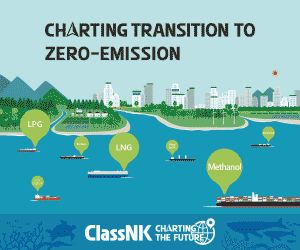There has been progress in maritime emissions, yet challenges remain in reaching climate alignment the 2025 Sea Cargo Charter Disclosure Report highlights.
According to its most recent disclosure report, the majority of signatories to the Sea Cargo Charter (SCC), reduced their emission intensity over the last year, reflecting the growing maturity, ambition and transparency of the charter.
However, action will need to accelerate to keep up with the ambitious emission reduction targets set by the International Maritime Organization (IMO), which become more stringent year-on-year.
Key findings:
- Increased annual trajectory stringency shows increasing pressure to improve
- The revised IMO strategy is a key influence on decarbonisation efforts
- Market realities complicate alignment despite best efforts
- High reporting rates and increasing data verification reflect maturing practices
According to the report, 32 out of the 34 reporting signatories recalculated the previous year’s scores to enable a meaningful comparison between this year’s and last year’s scores, applying the updated trajectories and emission factors to their data collected in 2023. On average, there is a decline in climate alignment compared to last year, i.e., signatories are less aligned in 2024 than in 2023.
Results against the minimum trajectory:
The simple average score (i.e., the mean score where each signatory’s score is equally weighted) was +12.2% misaligned with the IMO’s minimum trajectory.
Results against the striving trajectory:
The simple average score was +18.1% misaligned. This means that, on average, the emission intensity of signatories’ activities in 2024 was 18.1% above the required emission intensity to be aligned with the IMO’s ambitious targets. These targets aim to reduce greenhouse gas emissions from international shipping by 30% by 2030, 80% by 2040, and to achieve net zero by or around 2050.
However, this does not necessarily mean the signatories’ portfolio emission intensity was higher. Most signatories improved their emission intensity this year: 19 out of the 32 signatories that recalculated last year’s scores reported a lower emission intensity, and three reported the same emission intensity compared to last year. Yet, while most signatories improved their emission intensity in 2024, the trajectories become more stringent each year.

This becomes clear as nine signatories reported higher alignment scores this year despite their overall emission intensity improving. In these cases, the scale of improvement has not been as big as the efficiency gains needed to align with the trajectories.
In addition, this demonstrates the magnitude of the changes needed to put the industry on track with the emission reduction targets set by the IMO. Furthermore, two signatories improved their climate alignment score against the minimum but not against the striving trajectory.
In the short term, the rate of progression needed to align with the striving trajectory is bigger compared to aligning with the minimum trajectory.
However, eight signatories, i.e. a quarter of all signatories that recalculated last year’s scores, improved both their emission intensity and climate alignment scores this year, showing that progress towards climate alignment is achievable.
The Sea Cargo Charter continues to be a powerful enabler of progress, helping the maritime industry translate climate ambition into concrete action. This year’s results demonstrate that even as the IMO’s climate goals grow more ambitious, signatories are stepping up with greater transparency, operational improvements, and data integrity.
…said Engebret Dahm, Sea Cargo Charter Vice Chair and CEO of Klaveness Combination Carriers.
The 2025 Sea Cargo Charter Annual Disclosure Report was produced by the Global Maritime Forum, which performs secretariat services with expert support provided by UMAS and the Smart Freight Centre.

































































